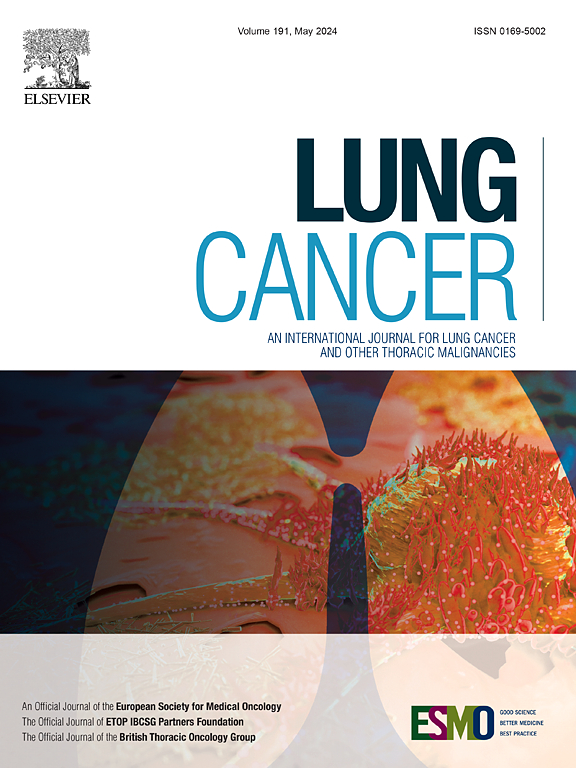Defining the needle in a haystack: A compendium of genomic, pathologic, and clinical characteristics of rare pulmonary tumors
IF 4.5
2区 医学
Q1 ONCOLOGY
引用次数: 0
Abstract
A major paradigm shift in the diagnosis, management, and survival outcomes of early and advanced non-small cell lung cancer has transpired over the past few decades in thoracic oncology with the incorporation of molecular testing, targeted therapy, immunotherapy, neoadjuvant, and adjuvant approaches. However, transformation in the management and survival outcomes of rare lung tumors is lacking. Given the scarcity of these tumor types, randomized trials are rarely performed, and treatment is extrapolated from case series, tumor-agnostic trials, or cancers with similar histology. Literature informing the management of rare pulmonary tumors is typically limited to a single histology, unique features, or extraordinary responses to therapy. Few resources detailing genomic characteristics and delineating features of these tumors are available, often resulting in suboptimal treatment. Here, we explore the clinical, histopathologic, genomic features and potential therapies of five rare pulmonary tumors, namely adenosquamous, basaloid squamous, mucoepidermoid, carcinosarcoma, and NUT carcinoma, to build a resource for rare histological subtypes of the lung and emphasize knowledge gaps in the management of these tumors. Our recommendations are based on a comprehensive review of case reports and series, clinical trials, and the “Indiana University Experience.”
大海捞针:罕见肺肿瘤的基因组、病理和临床特征汇编。
在过去的几十年里,随着分子检测、靶向治疗、免疫治疗、新辅助和辅助方法的结合,早期和晚期非小细胞肺癌的诊断、管理和生存结果发生了重大的范式转变。然而,罕见肺肿瘤的治疗和生存结果的转变是缺乏的。鉴于这些肿瘤类型的稀缺性,很少进行随机试验,并且从病例系列,肿瘤不可知论试验或具有相似组织学的癌症中推断治疗。文献报道罕见肺肿瘤的治疗通常局限于单一的组织学、独特的特征或对治疗的特殊反应。详细描述这些肿瘤的基因组特征和特征的资源很少,通常导致治疗效果不佳。本文旨在探讨腺鳞癌、基底细胞鳞癌、黏液表皮样癌、癌肉瘤和NUT癌这五种罕见肺肿瘤的临床、组织病理学、基因组特征和潜在治疗方法,为罕见的肺组织亚型建立资源,并强调这些肿瘤治疗的知识空白。我们的建议是基于对病例报告和系列、临床试验和“印第安纳大学经验”的全面审查。
本文章由计算机程序翻译,如有差异,请以英文原文为准。
求助全文
约1分钟内获得全文
求助全文
来源期刊

Lung Cancer
医学-呼吸系统
CiteScore
9.40
自引率
3.80%
发文量
407
审稿时长
25 days
期刊介绍:
Lung Cancer is an international publication covering the clinical, translational and basic science of malignancies of the lung and chest region.Original research articles, early reports, review articles, editorials and correspondence covering the prevention, epidemiology and etiology, basic biology, pathology, clinical assessment, surgery, chemotherapy, radiotherapy, combined treatment modalities, other treatment modalities and outcomes of lung cancer are welcome.
 求助内容:
求助内容: 应助结果提醒方式:
应助结果提醒方式:


